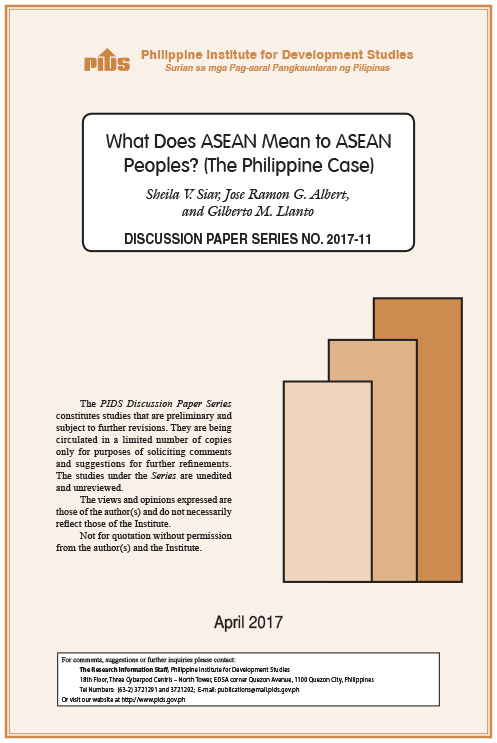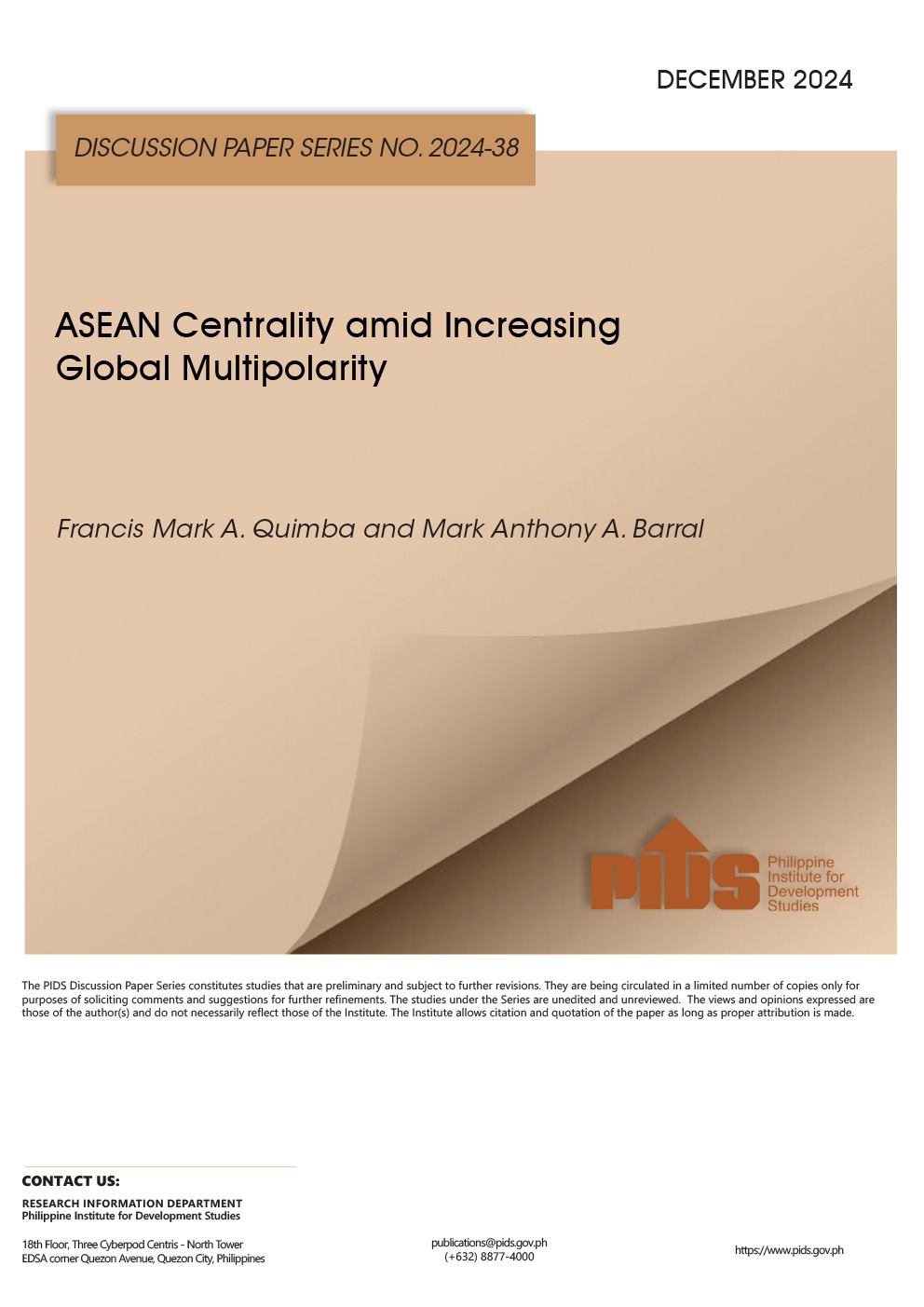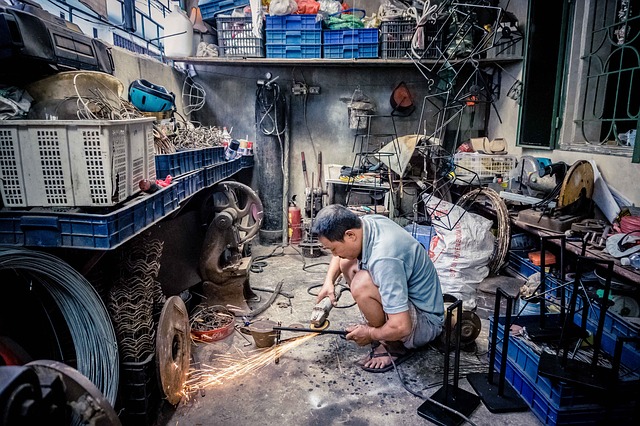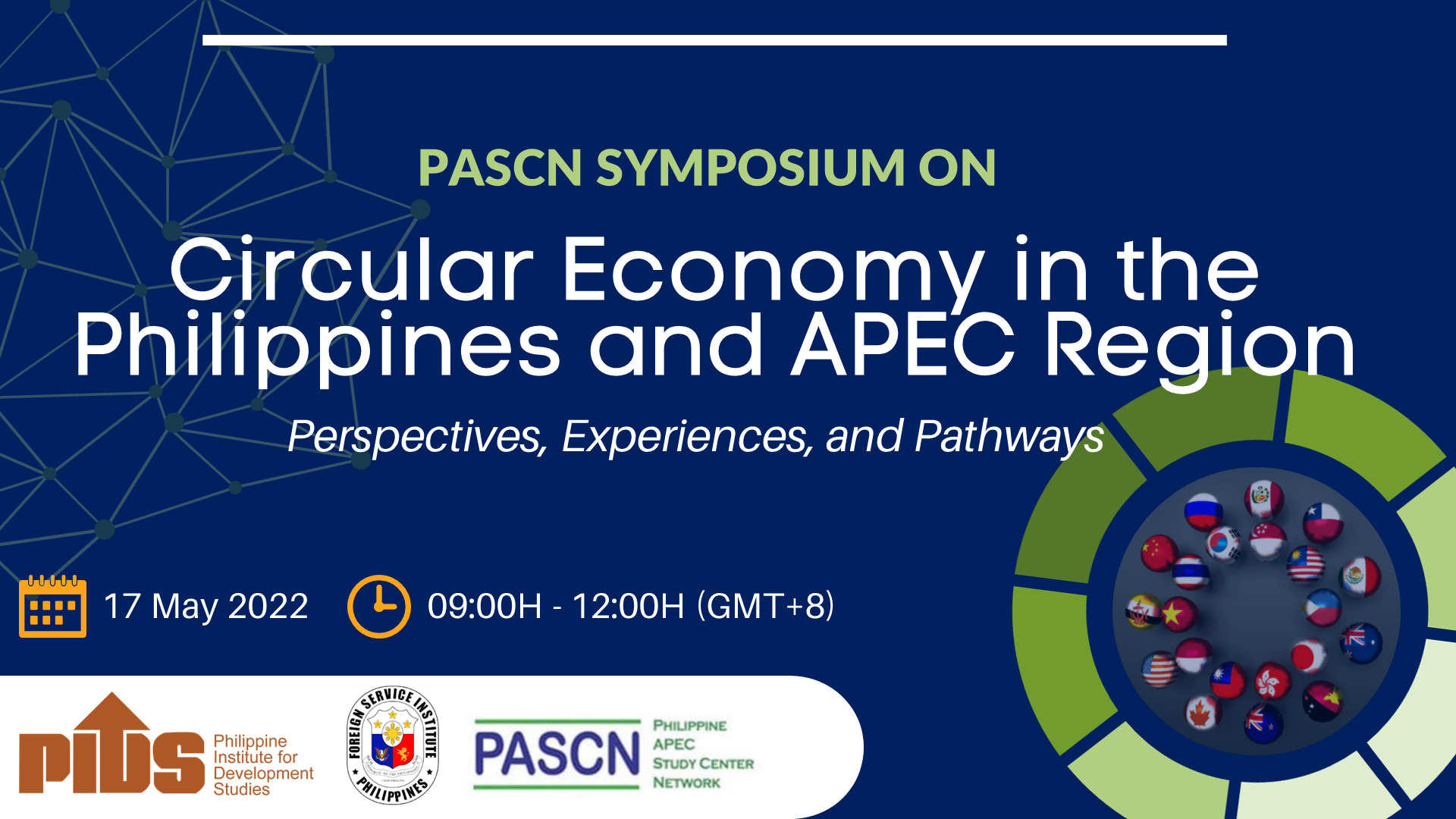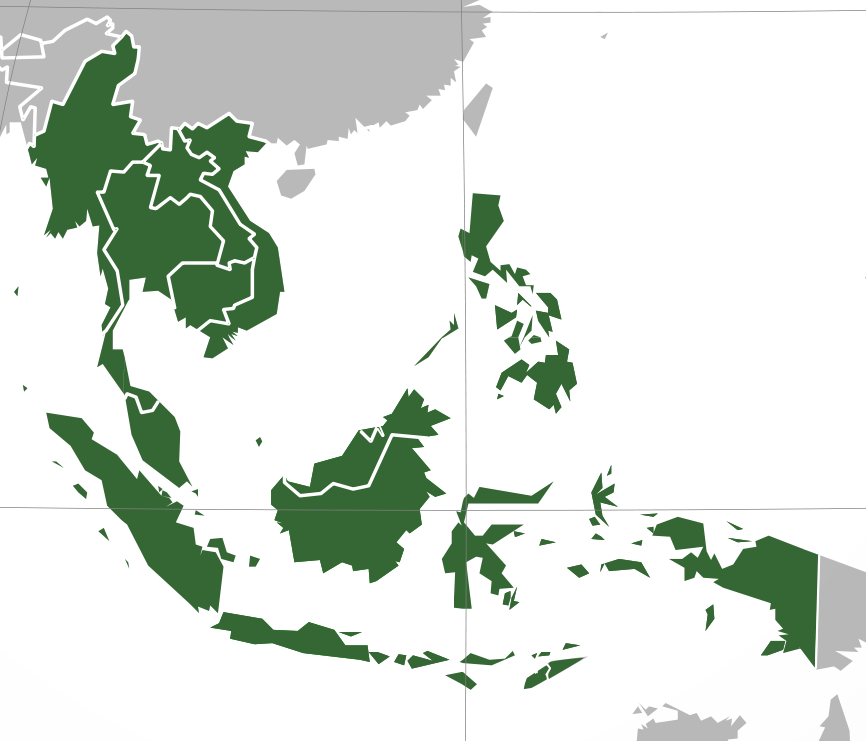
The Regional Comprehensive Economic Partnership (RCEP) will have varying impacts on the different sectors of the Philippines economy, but overall, it will be beneficial in the long term, especially to those in the lower income bracket.
This was announced by Dr. Caesar Cororaton, consultant of state think tank Philippine Institute for Development Studies (PIDS), in a study sponsored by the Institute. Cororaton released the findings in a PIDS policy note and in a Pulong Saliksikan on December 1.
The RCEP is a free trade agreement that involves the 10 members-states of the Association of Southeast Asia Nations and six of their current free trade agreement (FTA) partners--Australia, China, India, Japan, South Korea, and New Zealand.
Cororaton concluded that once enforced, the RCEP will help reduce poverty incidence in the country over time and increase the government’s welfare at USD 4.5 billion in 10 years. The Philippines would also see an increase in the income of poor households, a reduction in commodity process, and increased returns on wages and land rent.
Talks about the RCEP began in 2012. Its objectives are to achieve deeper economic integration in the region and to enable equitable economic development and cooperation among the signatory countries.
RCEP negotiations are underway toward eliminating tariff and nontariff barriers (NTBs) on goods and services, facilitating investment flows, protecting intellectual property rights, promoting competition and technical cooperation, and establishing a dispute settlement mechanism.
Varying impacts across sectors
Cororaton's study is part of a larger PIDS project being coordinated by Senior Research Fellow Erlinda Medalla focusing on the impacts of FTAs on the Philippines. Cororaton applied several models to conduct his research, including gravity-border effect model, global CGE model, and poverty microsimulation to determine poverty and distribution effects.
The models looked at a 10-year projection, from 2014 to 2023, and simulated how the RCEP would transform the Philippine economy. The results yielded a projected 90-percent reduction in applied tariffs in RCEP, a 10-percent reduction in NTBs in the RCEP region, and an increase of USD 2.4 billion in foreign direct investments (FDIs) in the Philippines.
Once tariffs are significantly reduced, imports coming in will have varying effects depending on certain factors.
For example, if the domestically produced goods are more expensive than their imported alternatives, they are more likely to be displaced. But in the long run, interaction effects in the market would enable other sectors to produce more efficiently.
Rice and textile sectors will have to adjust the most
The Philippine sectors that would grow the most in an RCEP scenario are construction, transport and machinery equipment, and services. Construction would benefit from higher FDIs, positively affecting the growth of transport and machinery equipment sectors, and the services sector.
The rice and textile sectors were singled out as least likely to benefit, if not elbowed out completely by the influx of cheaper goods. However, the cheaper imports would certainly benefit everyone else.
According to data, 22.5 percent of poor household’s income is spent on rice. The flow of cheaper imported rice will not only reduce this percentage of income spent, but it would enable at least 800,000 poor families to climb out of poverty.
Furthermore, wages will rise, and rent will rise as well, while returns to capital will probably decline.
Bright prospects for the Philippines
During the Pulong's open forum, PIDS Senior Fellow Vic Pacqueo recommended that the government should prepare a compensation mechanism, like re-employment or re-tooling programs, to buoy the negative impacts on the rice and textile sectors.
Cororaton, nevertheless, argued that, "These effects are considered progressive because they favor lower-income household groups."
He also underscored one of the most important contributions of the RCEP--the dispute settlement mechanism. It binds the countries to cooperate to the strict terms of the agreement, and encourages discipline and incentivizes reforms for members to become competitive.
"Significant reforms in investment and corporate taxation are required to make the Philippines an attractive destination for foreign investments," concluded the study. But all of these adjustments are sure to pay off because the Philippines has the potential to gain a lot from the RCEP.
"The Philippine economy has a large absorptive capacity for foreign capital," explained Cororaton. "Likewise, the Philippines has large amounts of untapped natural resources. A huge part of its labor force is composed of young professionals with a high level of education who can benefit from higher wages as result of the RCEP." ###
Thumbnail picture retrieved from Wikipedia.org
This was announced by Dr. Caesar Cororaton, consultant of state think tank Philippine Institute for Development Studies (PIDS), in a study sponsored by the Institute. Cororaton released the findings in a PIDS policy note and in a Pulong Saliksikan on December 1.
The RCEP is a free trade agreement that involves the 10 members-states of the Association of Southeast Asia Nations and six of their current free trade agreement (FTA) partners--Australia, China, India, Japan, South Korea, and New Zealand.
Cororaton concluded that once enforced, the RCEP will help reduce poverty incidence in the country over time and increase the government’s welfare at USD 4.5 billion in 10 years. The Philippines would also see an increase in the income of poor households, a reduction in commodity process, and increased returns on wages and land rent.
Talks about the RCEP began in 2012. Its objectives are to achieve deeper economic integration in the region and to enable equitable economic development and cooperation among the signatory countries.
RCEP negotiations are underway toward eliminating tariff and nontariff barriers (NTBs) on goods and services, facilitating investment flows, protecting intellectual property rights, promoting competition and technical cooperation, and establishing a dispute settlement mechanism.
Varying impacts across sectors
Cororaton's study is part of a larger PIDS project being coordinated by Senior Research Fellow Erlinda Medalla focusing on the impacts of FTAs on the Philippines. Cororaton applied several models to conduct his research, including gravity-border effect model, global CGE model, and poverty microsimulation to determine poverty and distribution effects.
The models looked at a 10-year projection, from 2014 to 2023, and simulated how the RCEP would transform the Philippine economy. The results yielded a projected 90-percent reduction in applied tariffs in RCEP, a 10-percent reduction in NTBs in the RCEP region, and an increase of USD 2.4 billion in foreign direct investments (FDIs) in the Philippines.
Once tariffs are significantly reduced, imports coming in will have varying effects depending on certain factors.
For example, if the domestically produced goods are more expensive than their imported alternatives, they are more likely to be displaced. But in the long run, interaction effects in the market would enable other sectors to produce more efficiently.
Rice and textile sectors will have to adjust the most
The Philippine sectors that would grow the most in an RCEP scenario are construction, transport and machinery equipment, and services. Construction would benefit from higher FDIs, positively affecting the growth of transport and machinery equipment sectors, and the services sector.
The rice and textile sectors were singled out as least likely to benefit, if not elbowed out completely by the influx of cheaper goods. However, the cheaper imports would certainly benefit everyone else.
According to data, 22.5 percent of poor household’s income is spent on rice. The flow of cheaper imported rice will not only reduce this percentage of income spent, but it would enable at least 800,000 poor families to climb out of poverty.
Furthermore, wages will rise, and rent will rise as well, while returns to capital will probably decline.
Bright prospects for the Philippines
During the Pulong's open forum, PIDS Senior Fellow Vic Pacqueo recommended that the government should prepare a compensation mechanism, like re-employment or re-tooling programs, to buoy the negative impacts on the rice and textile sectors.
Cororaton, nevertheless, argued that, "These effects are considered progressive because they favor lower-income household groups."
He also underscored one of the most important contributions of the RCEP--the dispute settlement mechanism. It binds the countries to cooperate to the strict terms of the agreement, and encourages discipline and incentivizes reforms for members to become competitive.
"Significant reforms in investment and corporate taxation are required to make the Philippines an attractive destination for foreign investments," concluded the study. But all of these adjustments are sure to pay off because the Philippines has the potential to gain a lot from the RCEP.
"The Philippine economy has a large absorptive capacity for foreign capital," explained Cororaton. "Likewise, the Philippines has large amounts of untapped natural resources. A huge part of its labor force is composed of young professionals with a high level of education who can benefit from higher wages as result of the RCEP." ###
Thumbnail picture retrieved from Wikipedia.org

